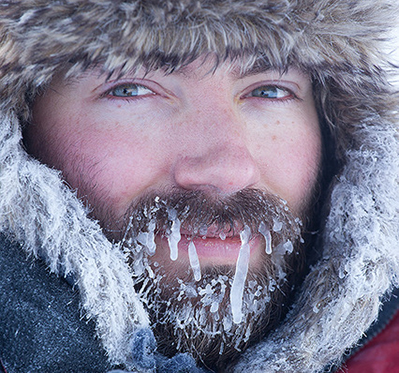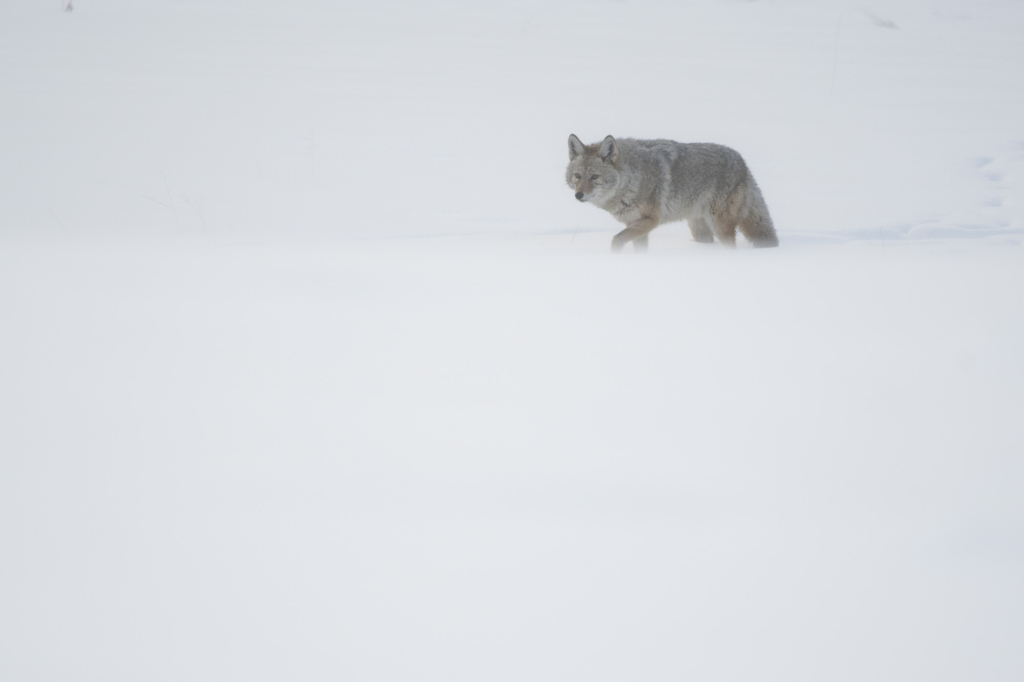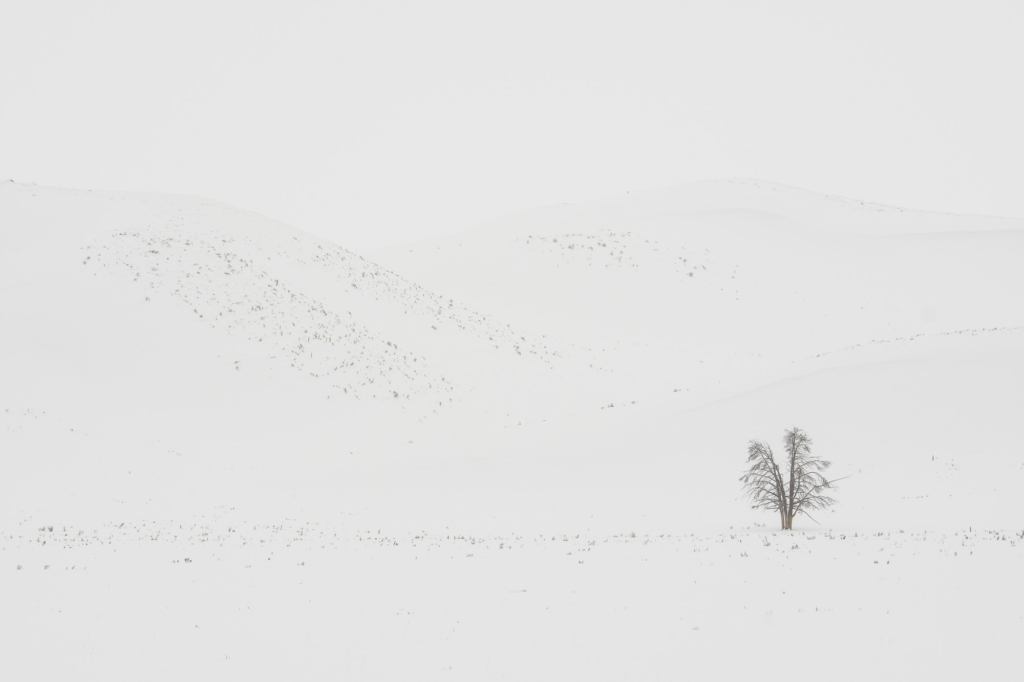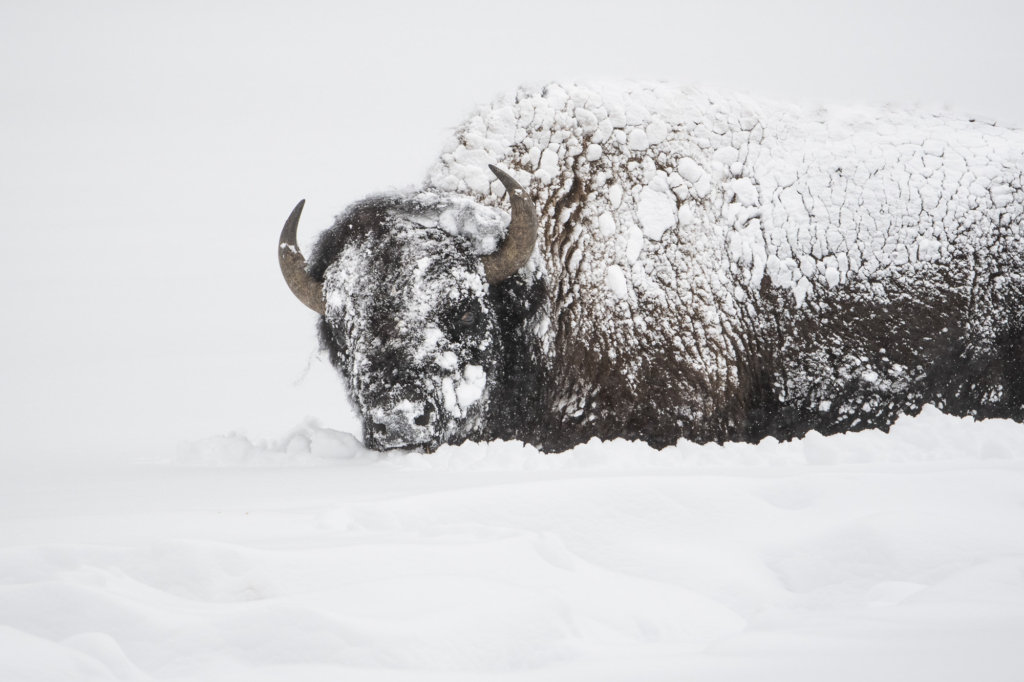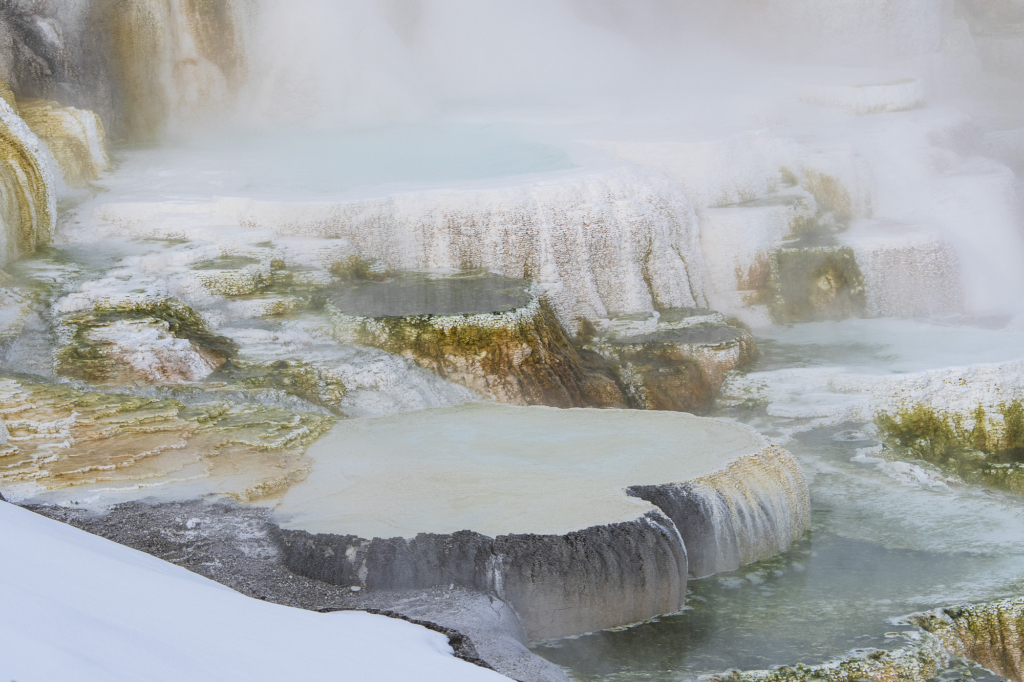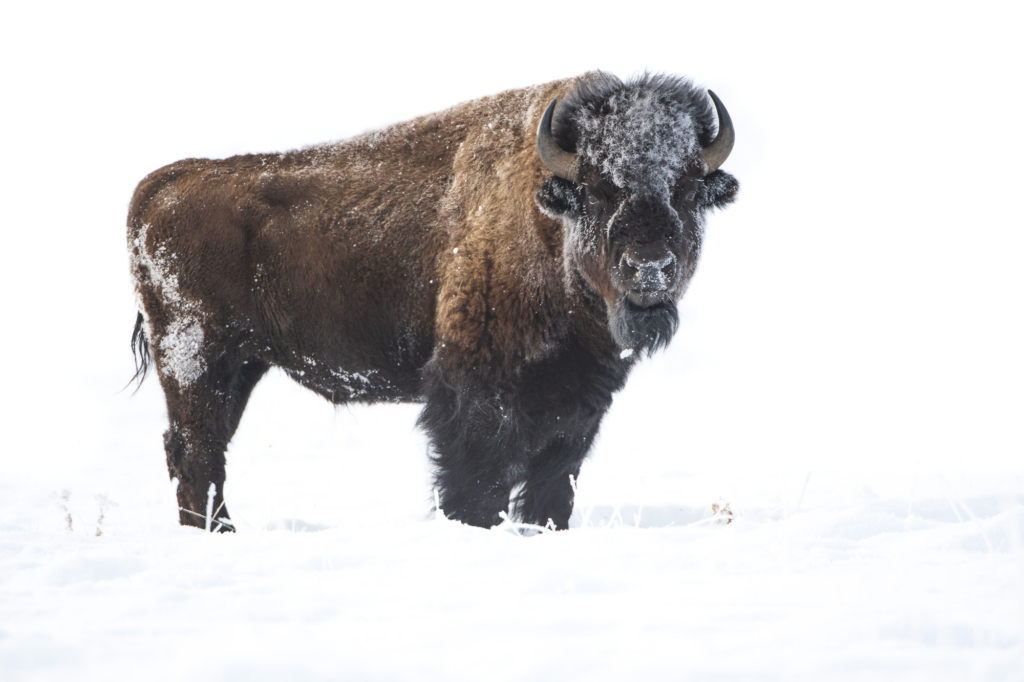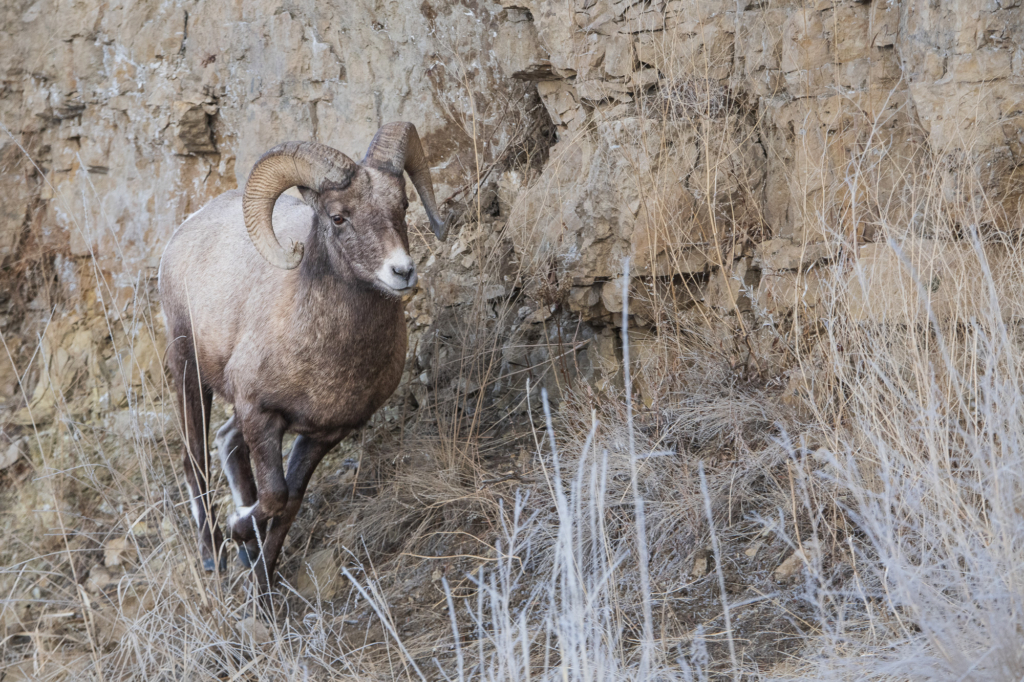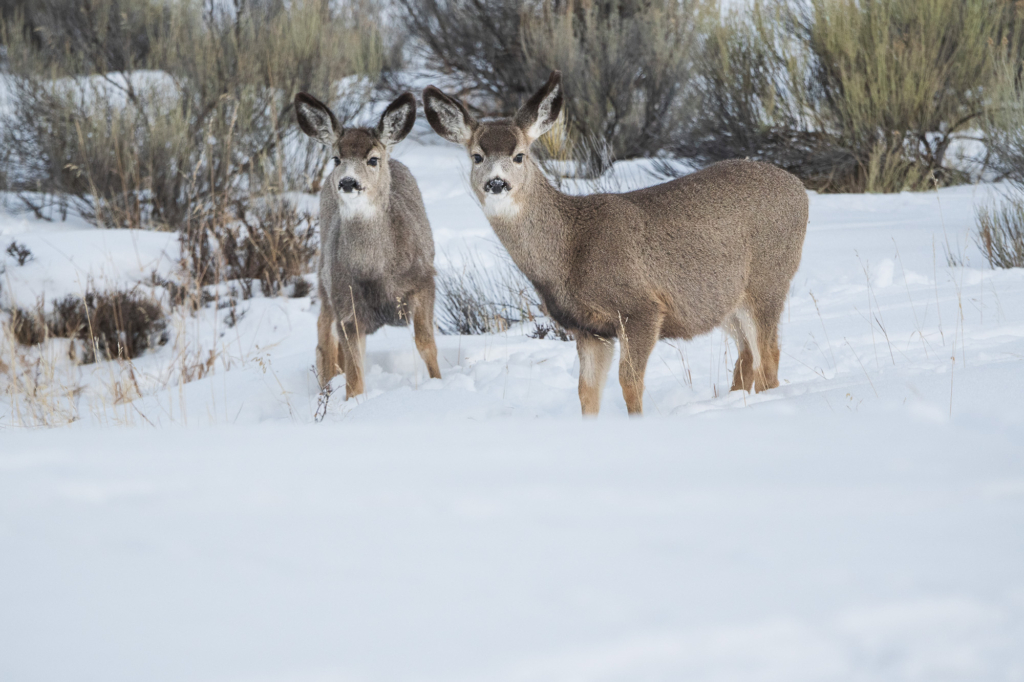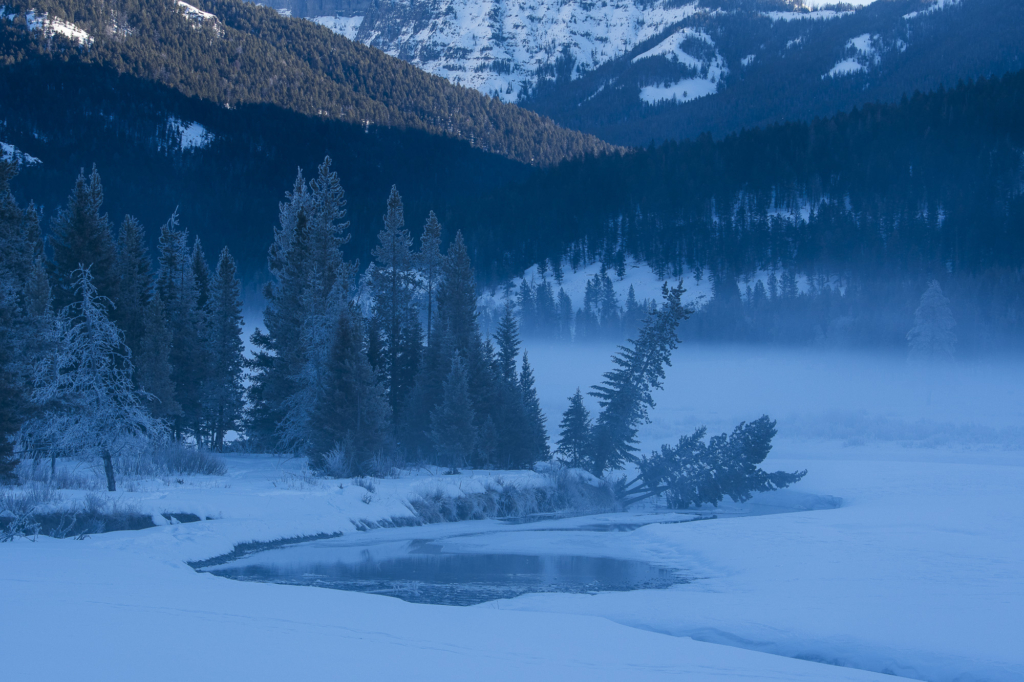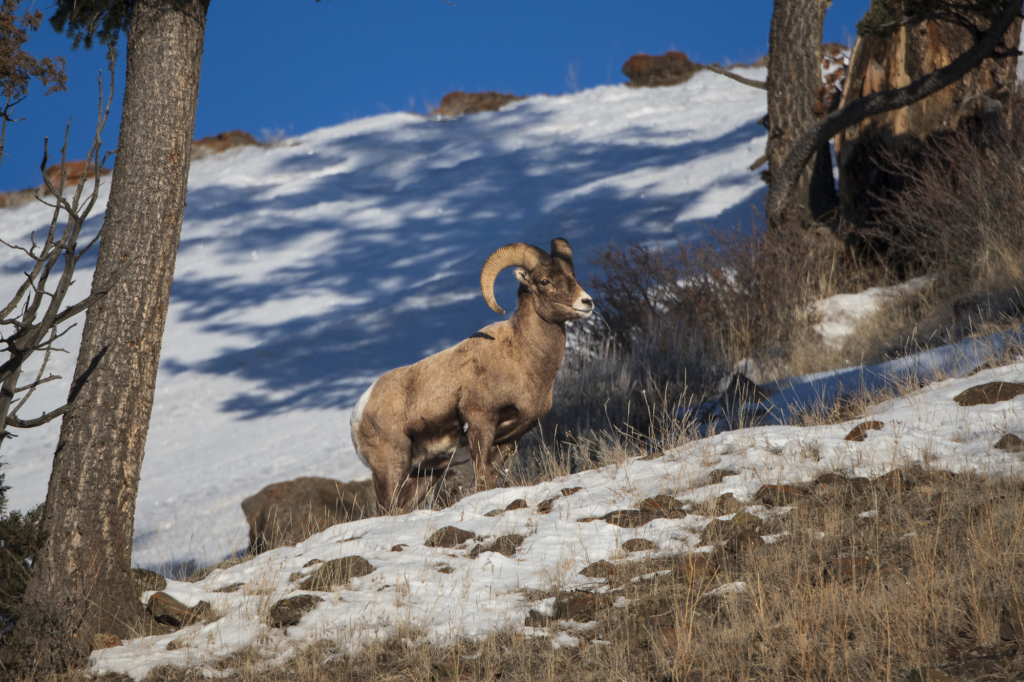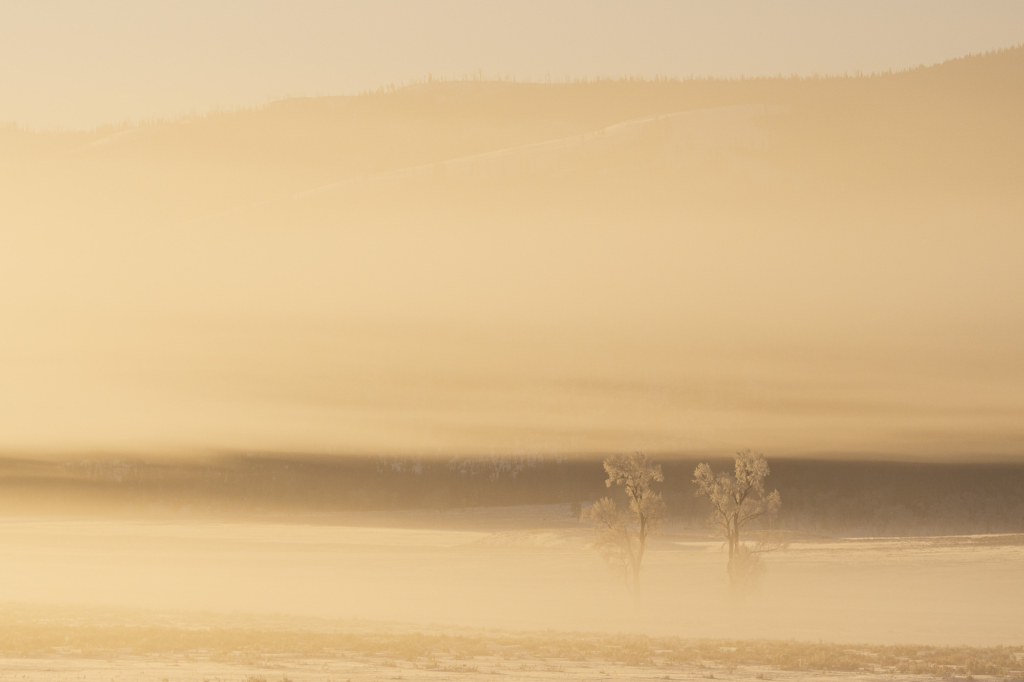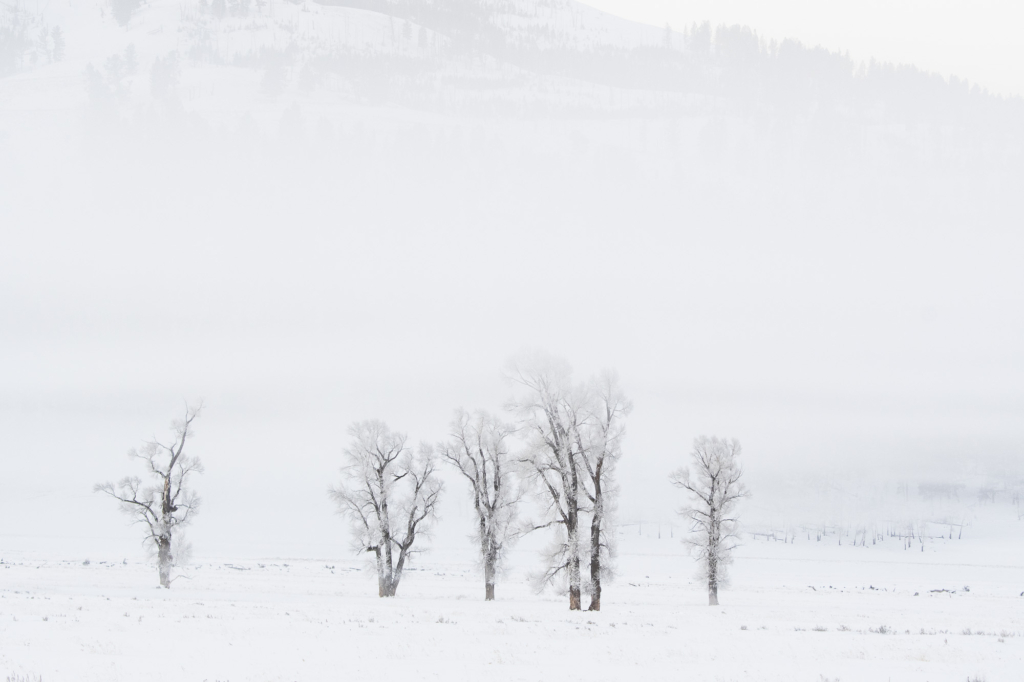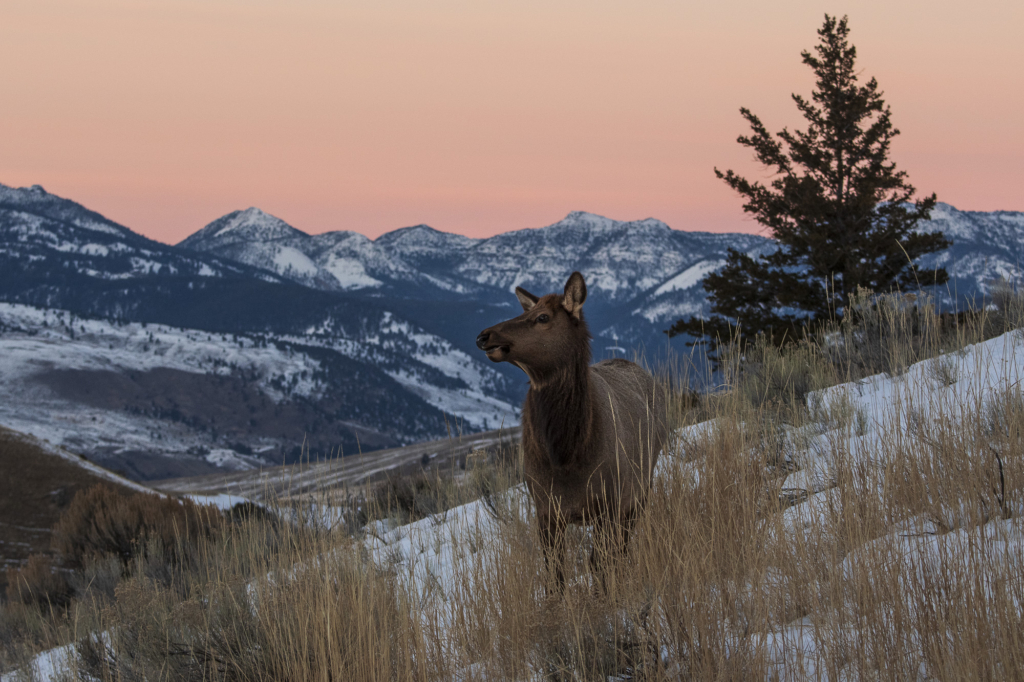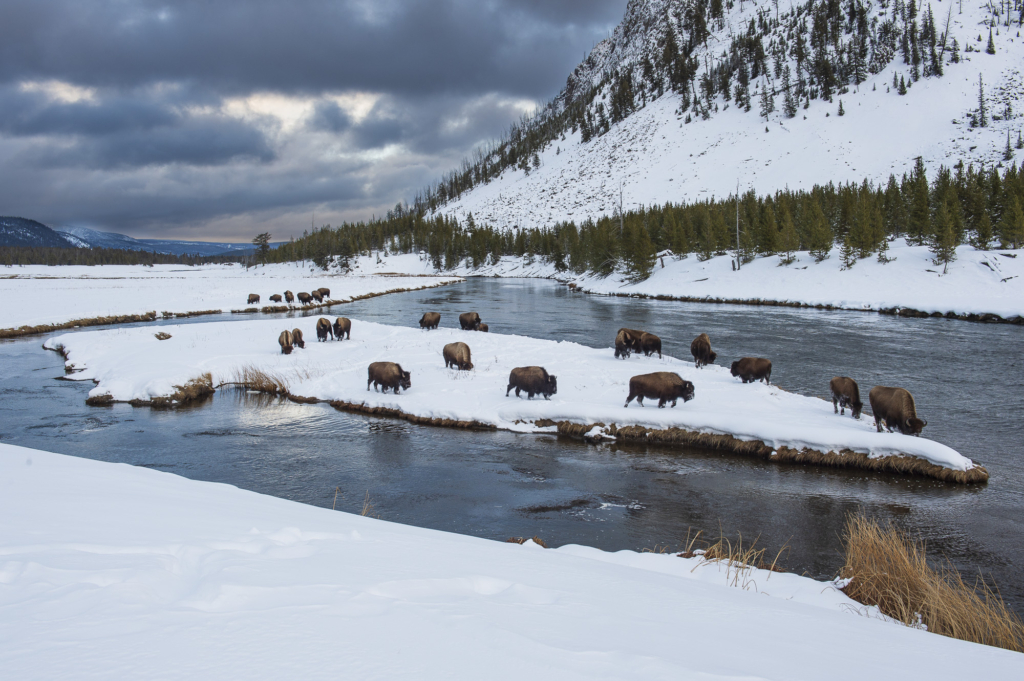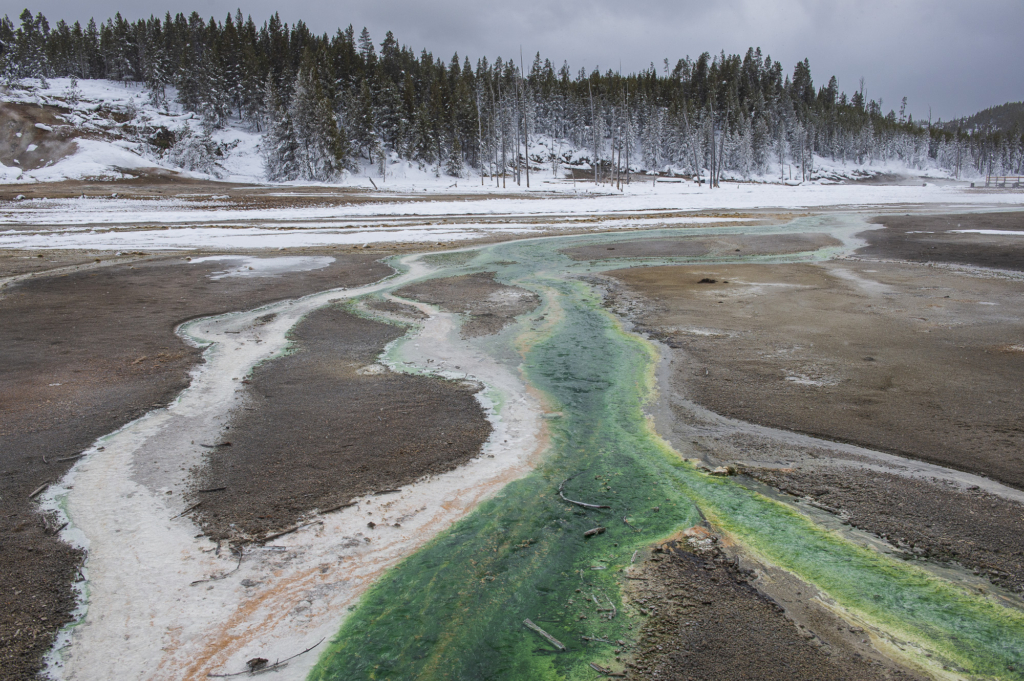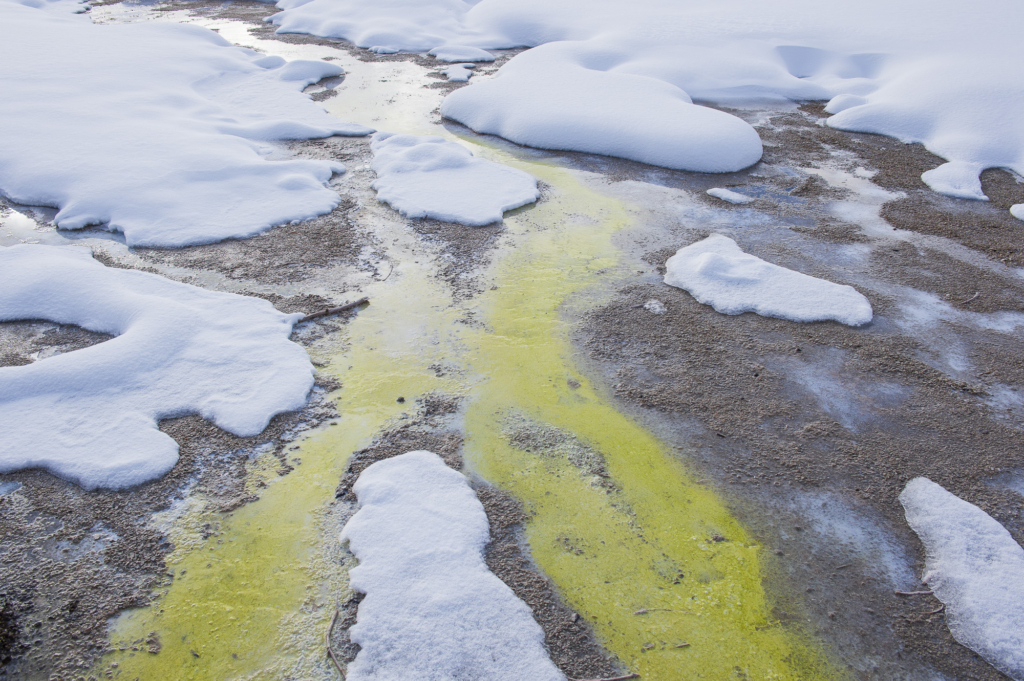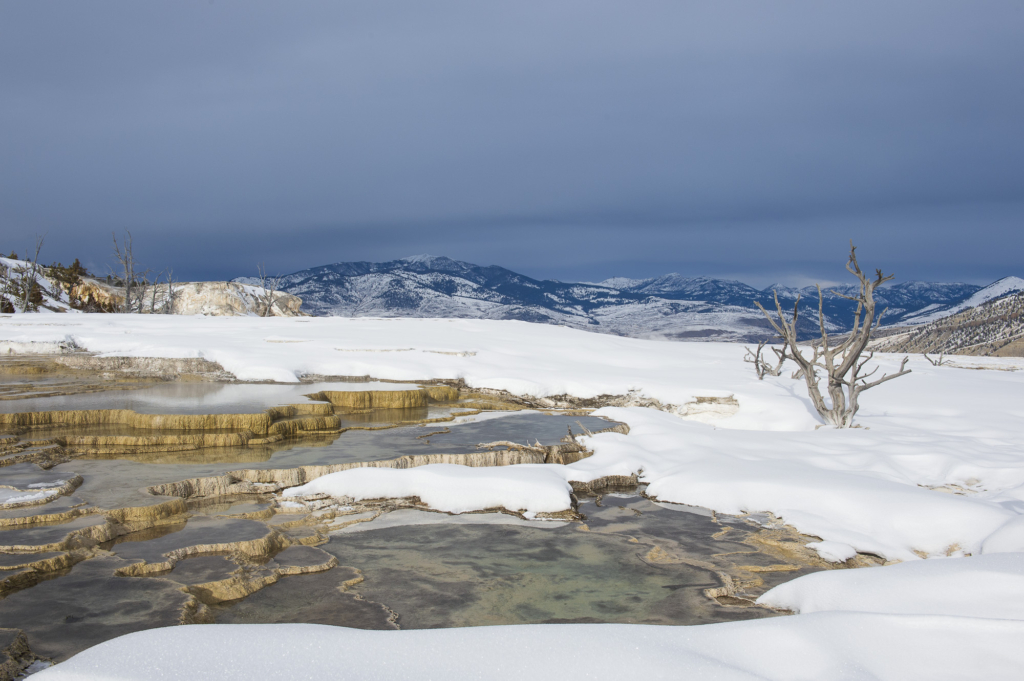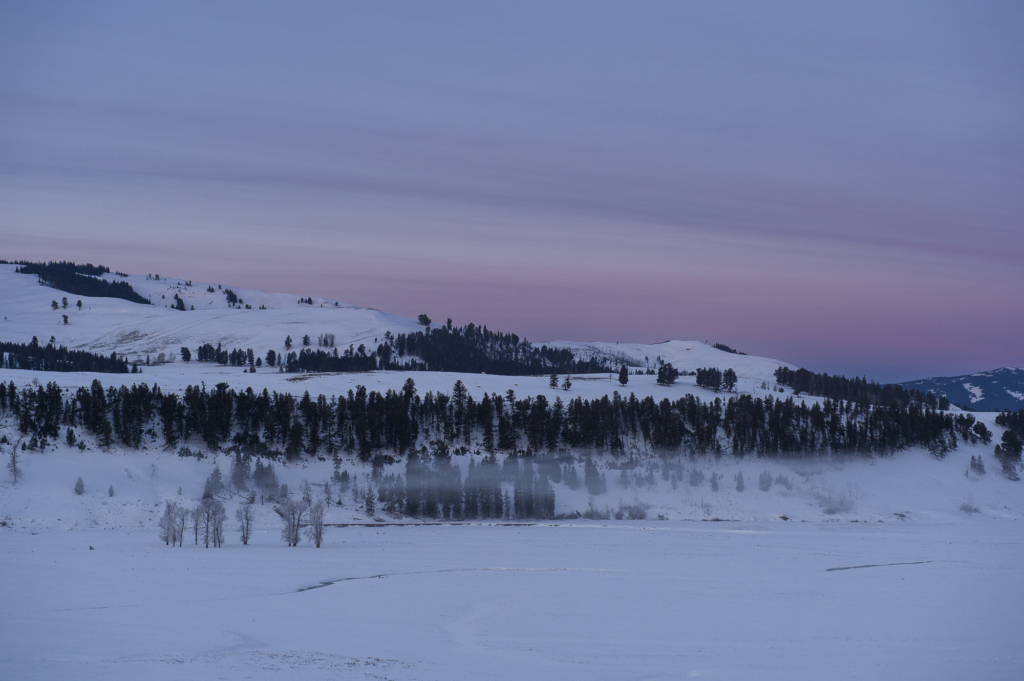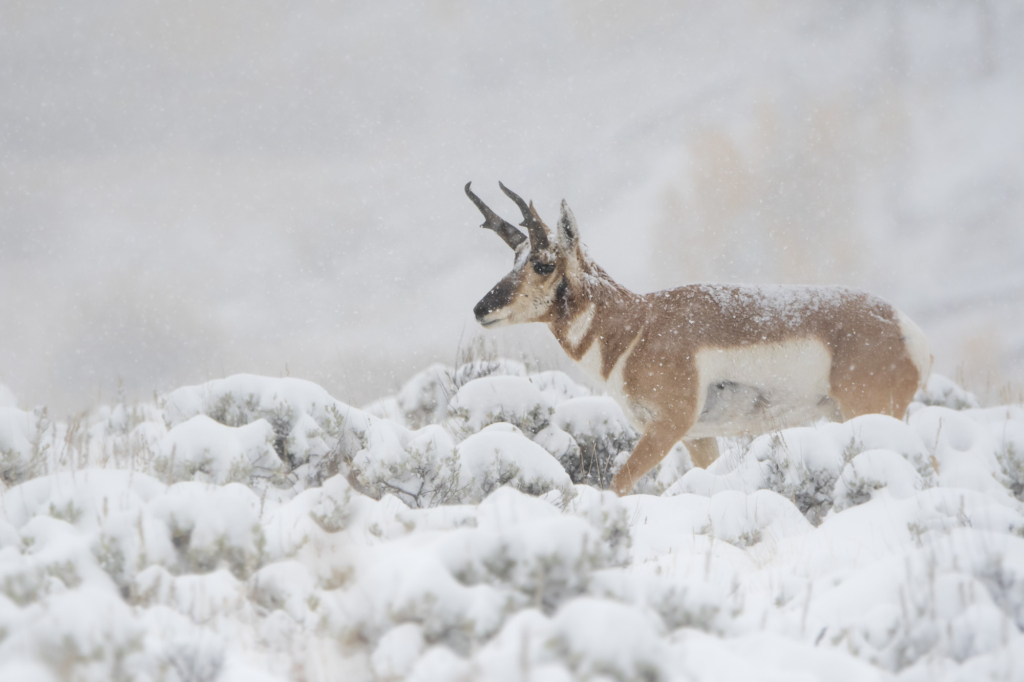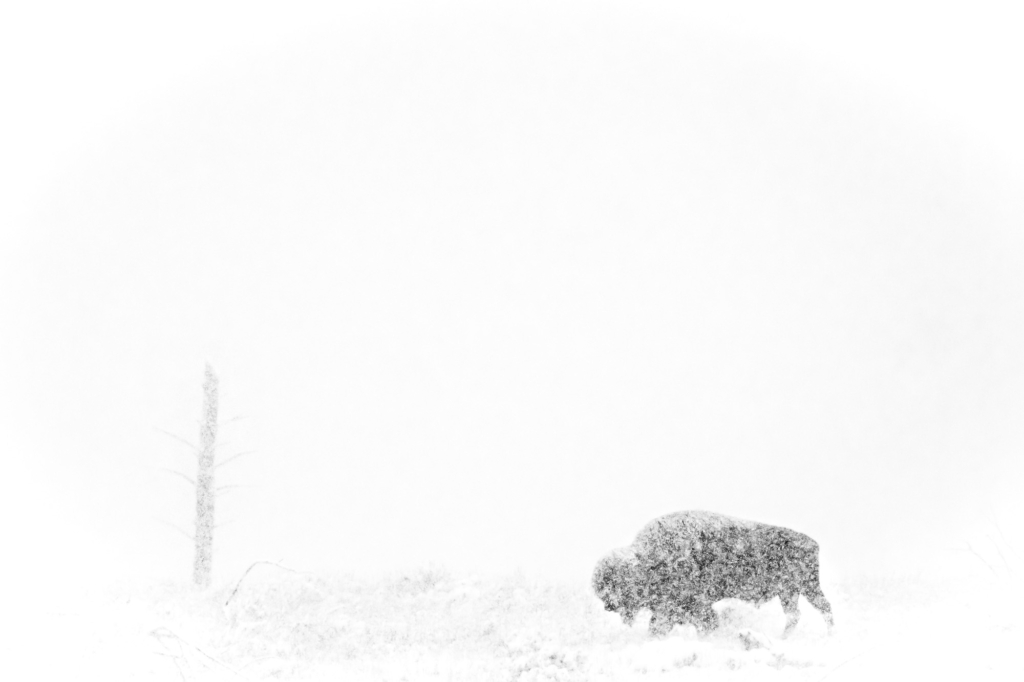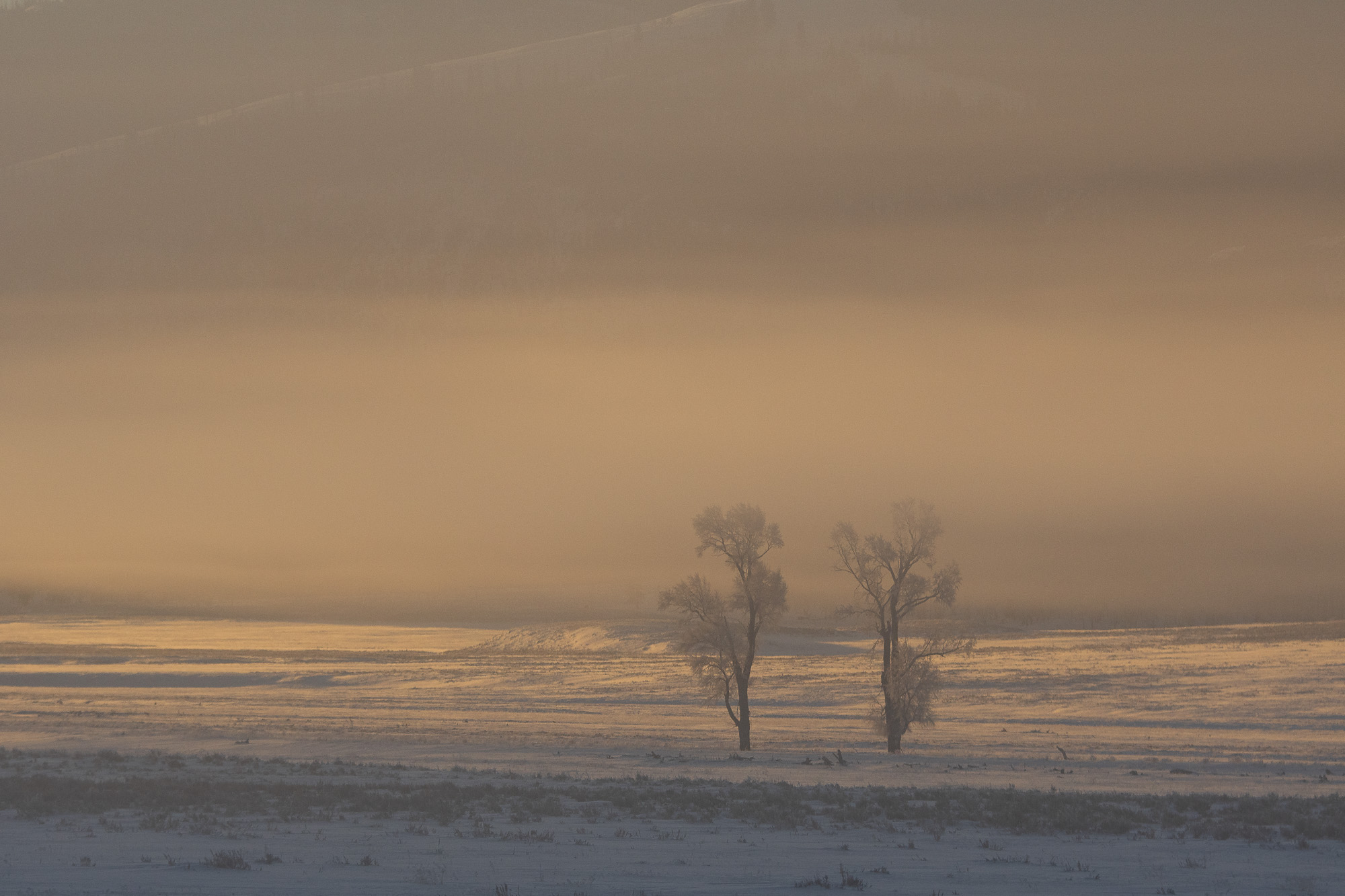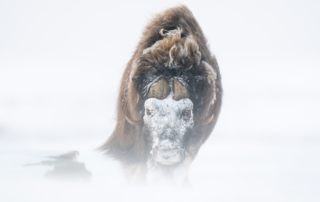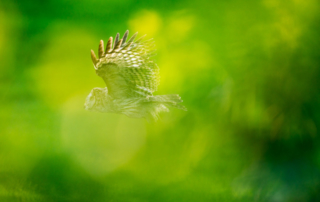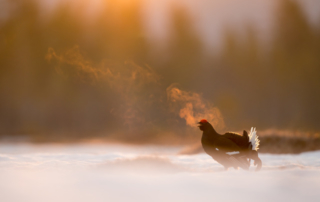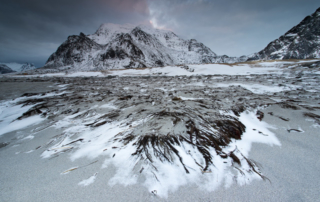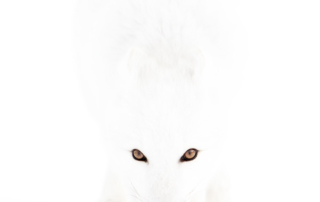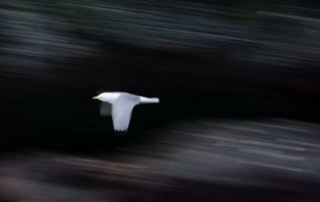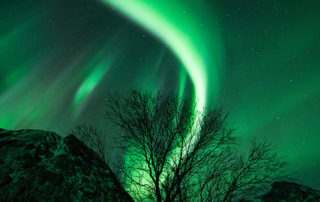
When Yellowstone National Park was established in 1872, it was the world’s first national park. Then as now, it is an enormously picturesque and wildlife-rich place. Yellowstone is one of the world’s most geothermally active places with lots of geysers, hot springs and other colorful geothermal phenomena, which give us fantastic photo opportunities. The landscape is wild and beautiful with mountains, valleys, waterfalls and lakes and in this there is an incredible wealth of wild animals such as e.g. bison, wapiti deer and bears.
In winter, Yellowstone becomes even more wild and beautiful when the snow covers the landscape and almost all roads are impassable except by special vehicles, so-called “Snowcoaches”. The animals are concentrated around the geothermal areas and the chances of seeing wolves and bobcat increase during the winter.
On this photography tour, we have carefully timed it to give us the best possible chance to experience and photograph Yellowstone National Park in truly wintry conditions. The time is also chosen according to when there is the greatest chance of seeing wolves and the shy bobcat. Yellowstone is America’s answer to the African savannahs with large concentrations of animals, but during the winter the grass is replaced by snow. We will experience large herds of bison, hopefully in the smoke of a geyser. Full of hoarfrost, they stand there like prehistoric animals in the landscape. Wapiti deer, pronghorn, fox, coyote, bighorn sheep and otter are species we normally get to see and photograph. In the mid-1990s, the wolf was reintroduced to Yellowstone, and during the winter the chances of seeing these majestic animals increase. During early winter we have the best chances of seeing bobcat.
For three days we move with our own cars in the Lamar Valley to photograph animals and landscapes. In order to experience the parts of Yellowstone National Park that are closed to normal vehicles during the winter season, we have chartered a so-called “Snowcoache” for 4 days, this is a minibus with huge tires, which can drive on the snow-covered roads.
YELLOWSTONES VOLCANIC AREAS
Large parts of the national park lie in the caldera, a crater-like formation formed when a volcano collapses, which was formed by the Yellowstone volcano’s last eruption about 640,000 years ago. Within large areas of the national park there is a rich occurrence and variety of different geothermal phenomena such as geysers, hot springs, so-called mudpots (hot springs with boiling mud), fumaroles (opening in the earth’s crust that release steam or gases), travertine terraces (rock formations formed by lime deposits from steam). Yellowstone is at least as famous for these phenomena as for its richness of animals. During our tour will we visit the area around “The old faithful” and Mammoth hot springs to photograph and experience some of the geothermal phenomena.
THE LANDSCAPE
The landscape in Yellowstone is very photogenic and we will have many opportunities to photograph the winter landscape. Exactly which places we will visit is determined according to the current conditions for the days we are in the national park.
WILDLIFE
From being close to extinction at the beginning of the 20th century, large herds of bison once again roam the Yellowstone grasslands. It is not uncommon to see herds of several hundred animals together and we will have many opportunities to photograph these magnificent animals, hopefully in a geothermal area where they are often covered in frost. The wildlife in Yellowstone is very diverse and we will meet pronghorn antelopes, bighorn sheep, coyotes, foxes and with some luck we may even be able to see and photograph bobcat. Since 1995 there are wolves again in Yellowstone, today there are 11 packs with a total of about 100 animals. Mainly the wolf packs stay in the Lamar and Hayden valleys. We need a lot of luck to see wolves and even more to be able to photograph them, but the winter months are the best time to experience the wolfs in Yellowstone.
This is a tour not only for the most avid nature photographers, but also for those who want to experience some of the world’s finest national parks and their wildlife up close in an incredible setting. The tour is not physically demanding, but you must be prepared to stay outside in a cold climate for many hours every day.
During the tour, we will also have time for photographic workshops where we will, among other things, go through techniques for next coming days shooting. We will also look at composition and each other’s images, all for you to grow in your photography.
Itinerary
Day 1 (3/1) (Dinner)
Flight to Bozeman, Montana.
Overnight at hotel in Bozeman.
Day 2 (4/1) (Breakfast – Lunch – Dinner)
We leave Bozeman for Gardiner in the morning. In Gardiner we check into our hotel. We spend the rest of the day in the Lamar Valley looking for animals. Here we can experience most of Yellowstone’s wildlife.
Day 3-4 (5-6/1) (Breakfast – Lunch – Dinner)
We continue to explore the Lamar valley these two days. The road goes through an exciting landscape and we get to experience a unique animal life. We can stop our cars whenever we want and go out and take pictures. Along the Lamar River we have great chances of seeing otters and the bald eagle also hunts here.
Day 5 (7/1)(Breakfast – Lunch – Dinner)
Today we travel by snowcoach from Mammoth Hot Springs to the interior of Yellowstone. Here we will experience geysers and other geothermal activities but also a lot of animals. We will have a special focus on the Yellowstone river, Hayden Valley and Geysir Basins which are located around the famous geyser “Old faithful”. We spend the night in West Yellowstone just outside the national park border.
Day 6-7 (8-9/1)(Breakfast – Lunch – Dinner)
During these days, we continue to go with snowcoach. We move in the areas we told you about for day 5. Exact planning is based on weather and animal activity. We will have great opportunities to photograph bison covered in hoarfrost from geyser steam.
Day 8 (10/1) (Breakfast – Lunch – Dinner)
During the morning we continue to explore Yellowstone with our snowcoach. In the early afternoon we will return to Mammoth Hot Springs. We continue in the early evening to Bozeman where we spend the night.
Day 9 (11/1) (Breakfast)
After breakfast we leave for the airport and out flight back home.
Photographic leader
Floris Smeets, born 1986 in the Netherlands. Living in Norway since 2010. Since 2014, Floris has been working full-time with nature photography, guiding and as a workshop leader.
He has a great passion for guiding and loves to share his knowledge with the participants at workshops.
Floris has a strong focus on the Norwegian nature and especially animals and landscapes. He always works with great respect for animals and nature and thinks it is very important that pictures are taken without disturbing the animals or changing the environment. With his pictures, he not only captures the beauty of nature, but in a way where the pictures tell a story.
Floris is the Sony Europe Imaging Ambassador. His images have been published in a wide range of magazines and exhibitions.
Floris is a licensed guide in Dovrefjell National Park and has many years of experience camping under really challenging winter conditions. Floris speaks English, Norwegian, Dutch and German.
